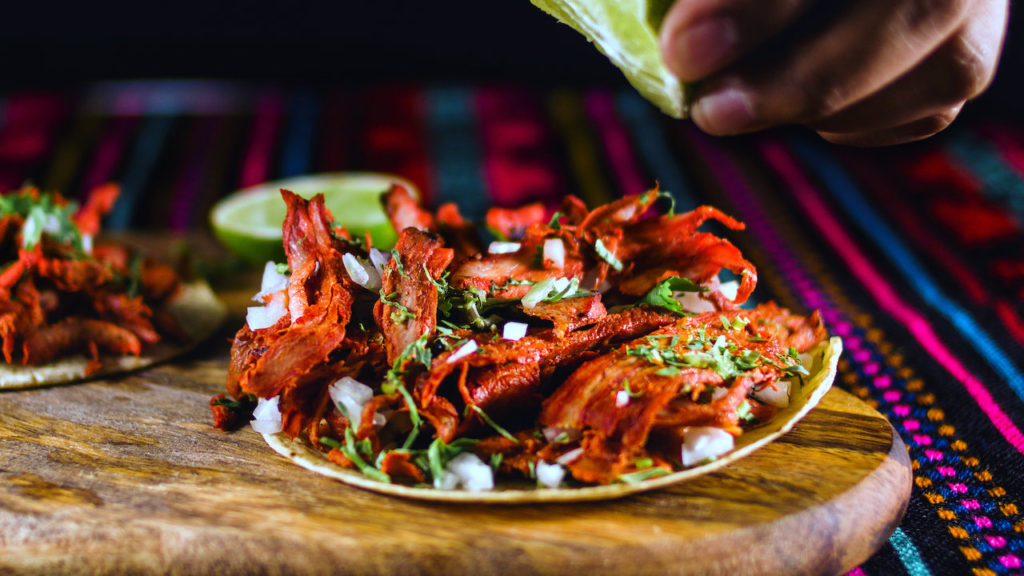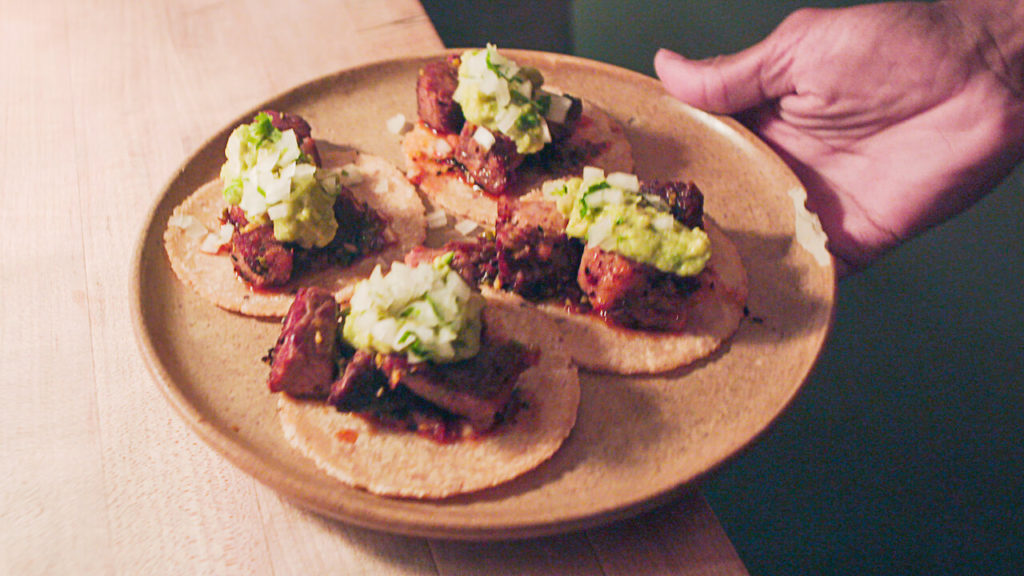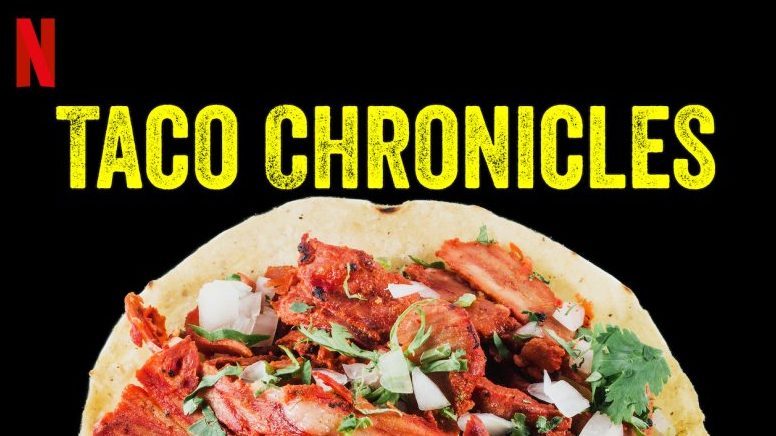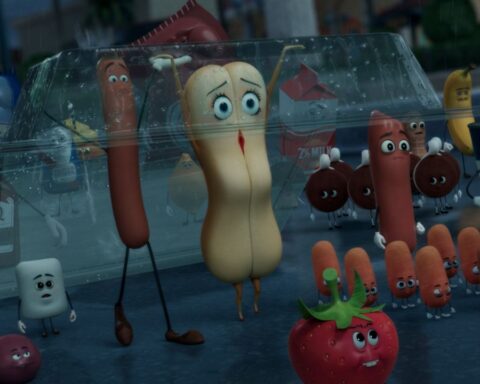We thought we knew tacos. We’ve had our fair share of those tiny stuffed tortillas, and we thought we understood what they were all about. Boy were we wrong. After sitting through two seasons of Taco Chronicles on Netflix, after watching all 13 episodes, each one dedicated to a specific varietal of taco, we realised just how little we knew about Mexico’s favourite street food. Hell, we were even eating them wrong.
Umapagan Ampikaipakan: We’ve been eating tacos the wrong way! At least I have. You’re supposed to tilt your head to meet the taco. The tortilla stays level. Always. You’re the one that needs to move. It shows deference to the food. I like that. It’s like a dance. It’s a practiced movement.
Bahir Yeusuff: It does seem like EVERY Mexican eats a taco the same way! Maybe the nurse hands out a pamphlet every time a new baby is born. Or they just know better than you do.
UA: I’m also now convinced that tacos taste better when you eat them standing up, at the side of the road, in the middle of the night. Kinda like burger Ramly.
BY: There does seem to be a certain charm to that. I’d never order a burger abang from a mamak. Nothing against the mamak, but is it really a burger abang if it isn’t made by the abang behind the roadside stall? A deeply philosophical question, I know. But that is where it’s at.
Just think about it. Up until a few years ago, all the tacos that were available here in Kuala Lumpur were from sit down, Tex-Mex restaurants. We were totally missing a beat. We weren’t getting the full taco stand experience.

UA: A few years ago, the poet Calvin Trillin wrote a satirical poem in The New Yorker called “Have They Run Out of Provinces Yet?”. There were some who felt that he was being racist and dismissive of Chinese culture. I found it quite eye-opening as it reflected some of the very uninformed conversations we often hear among foodies. Trillin was being critical of foodie culture. Especially New York foodie culture. Where everyone is always looking for the next big thing. Where they have one kind of “Chinese” food and think that they know all of Chinese cuisine. Where an introduction to a new style of Chinese cooking is met with shock and disbelief.
And I think we’re all guilty of such arrogance. For me, Mexican food only ever meant one thing. Because that’s the only thing we could get here in Malaysia. And it’s documentaries like this that truly show me how vast and varied their cuisine is.
BY: And that is the first “problem” I have with The Taco Chronicles. No one actually defines what a taco is. Is it the fact that it’s in a tortilla wrap? Is it the way it’s cooked? What is a taco? I had an image of what a taco was, but then the series hits you with a curve ball and devotes an entire episode to the burrito and I’m like waitjustadamnminute!
It’s all very confusing and hunger inducing.
UA: Wait. So, before we go any further, I think it’s safe to say that a taco should be made up of three basic ingredients. A tortilla – either corn or flour. A filling of some kind. And salsa. Those are essential. If you’re missing any one of those components, then you can’t call it a taco. It’s like nasi lemak without the peanuts.
BY: Nasi lemak without peanuts or anchovies should be illegal by Malaysian law.
And yes, I agree with your definition. The other thing that this series did for me was to show me all the different types of tacos that were available in Mexico. From the different meats (and the different ways the meat is cooked), to just beans and cheese, all of these are tacos. I have to admit, I was very much against the idea of using kebab style meat in a taco. I always deemed it to be inauthentic. But there it is, Episode 1 of Season 1, Taco al Pastor. There are also a lot of pork based tacos.

UA: I had no idea just how many types of tacos there were. I didn’t think they’d have enough for one whole season, let alone two. But that shows you just how little I knew. Watching this was such a learning experience for me. Every episode introduces you to a style of taco, takes a deep dive into the history and legacy of that particular variety, and introduces you to the people who have dedicated their lives to making it, and preserving it. Thy also tell you how each taco has evolved, not just with time, but also through various cultural influences.
BY: The episode on the American taco was also quite delightful. They admit that the taco in the U.S. isn’t necessarily a traditional taco, but that’s okay. Because this is their taco. That overwhelming sense of pride in their creation is great.
The way each episode is structured is also quite fun. Each episode is focused on one form of taco (suadero, the cochinita, cabrito, birria, pescado, al pastor, carnitas, canasta, asada, barbacoa, guisado) and is “narrated” by the taco itself. These tacos have a story, a history to tell, and it’s told from their point of view.
(Man, I want a taco.)
The Taco Chronicles also does a great job of introducing Mexican culture as well. This too is done through the voice of the taco. In the first season, there is an episode (“Canasta”) that is focused on the basket taco. It’s a small taco filled with either potatoes, beans, or pork, that is packed into a basket, topped off with hot oil, hundreds at a time, and then placed on a bicycle to be sold street side. Think of it like a taco version of the Malaysian putu mayam motorcycle. The story focuses on a transgendered woman known as the Lady Basket Taco. They talk to us about this third gender and how it is accepted in this town in Mexico. This individual isn’t seen as less than one gender or the other, but rather as the best of both genders. That was quite eye opening for me.

UA: Like so many of these shows, the food is only one part of the story. So much of what makes this series so watchable are the characters, the places, and the stories that revolve around the taco.
I’ll admit that I did find the “voice of the taco” a little jarring at first, but it doesn’t take long for it to settle into a groove. In fact, I found that overwrought and over-passionate voiceover to be part of the reason I was so hungry after every episode. Yes, it’s a little childish, but having my food talk to me in a seductive way really got me going.
BY: By the end of Season 2, I was left hoping that the show would go places outside of Mexico. What are other people doing with the taco? What are their definitions and versions of the taco? I’m sure there are more Mexican tacos out there. There can’t be only one type of fish taco! I wonder if there is an European version of the taco, or an Asian taco (that Japanese taco truck aside). Although the idea that a fish taco is essentially a Mexican version of a tempura does put a smile on my face.
For me Taco Chronicles was a fun watch, but somehow left me wanting more.
UA: More tacos?
BY: Wanting tacos yes, but also just wanting more. And I don’t know what that “more” is, but I just wanted it. Maybe I’m just being a spoiled Melayu boy, annoyed that he had to watch so many different types of tacos that he can’t have. Because, pork
UA: I’m sure we can play around with some jackfruit and cook it accordingly in order to emulate pulled pork. Then again, you don’t have to wait very long for Impossible’s pork substitute.
BY: Yes please!

BY: Taco Chronicles is different from the Chef’s Table style of food show. It’s a different dish altogether. Taco Chronicles is about the food and the culture that created it. It’s about how the weather forced some regions of Mexico to use corn instead of flour. It’s about the history of the Spaniards (who got it from the Arabs) bringing goats to South and Central America. This isn’t really about the creation of a dish, or a style of food, but rather the life of a taco and the people that made it. It’s about a dish and its place in society.
UA: I want to go back to what you were saying earlier about where this series can go. I too want to see further seasons explore how the idea of the taco has traveled. I want to see how different cultures have modified it and made it their own. Claiming ownership over food is all but impossible. It’s one of those things that doesn’t just affect every palate, but is affected by it. God knows I’ve made Indian “tacos” at home using chapatis and paneer.
BY: But aside from a claim of ownership, I want to see how these tacos have evolved in the hands of culinary artists. The Michelin star taco from season 2, I want to see more of that. I also want to know what other cultures have done. I want to see the spread of the taco internationally. Go on and pull on those historical threads that bind us together in our love for the taco. In Episode 1, the series spoke about the influence of the kebab on the taco al pastor. I want to see more of that.

UA: I also want to see other shows like this. You could make a 100 episode series on the different shapes of pasta and their histories, as well as the stories of the nonna’s who still make them. You could do a deep dive into all the rotis in India. Heck, I think we could probably pull off “The Ramly Chronicles” right here.
Shows like this are important because they force us to think about the food we’re eating. Not just about the ingredients and where they’re sourced from, but also about the historical and philosophical ideas behind them. Food isn’t just about sustenance. It’s about politics and economics. It’s about the conquistadors burning Mexican books so that the only way they could keep these recipes alive was by word of mouth. It’s about the connection between making tacos and Japanese martial arts. It’s all of these things and more.
BY: Just as Chef’s Table was about the people behind the food, these Chronicles could focus on a specific dish. Not only can it remind us of forgotten traditions, but also introduce it to new people. Now, I want a series on salsa. The condiment, but now that I’ve mentioned it, also the music. Please, and thank you.
UA: One final note. Don’t watch this on an empty stomach.
BY: Also, find out where the closest taco place is. You’re gonna need it. Reach out to us if you need any help. We have quite a few recommendations.
UA: You’re welcome.
The Taco Chronicles
Netflix, Seasons 1 + 2, 13 episodes
Showrunner: Pablo Cruz
Director: Carlos Perez Osorio
Writer: Arcadi Palerm









Follow Us